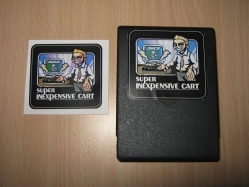
Autopsy:
The Sic!Cart (Super Inexpensive Cart) is a low price Flash Cartridge System for the Atari XL/XE series computers.
Sic!Cart available configurations:
- Programmed GAL.
- Sic!Cart with 2Mbit memory.
- Sic!Cart with 4Mbit memory.
source: atariage.com
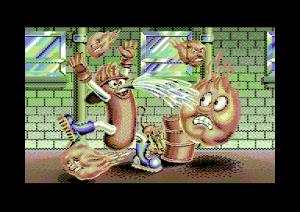 This is a very nice conversion of the arcade game Mappy from Namco for Commodore 64. Thanks to Encore of Undone for this game.
This is a very nice conversion of the arcade game Mappy from Namco for Commodore 64. Thanks to Encore of Undone for this game.
Download: Frantic Freddy (1296)
source: noname.c64.org
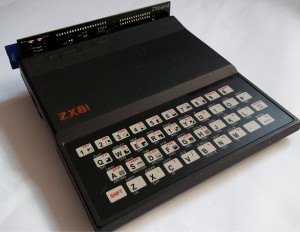 The ZXpand interface is a brand new interface for the Sinclair ZX81, and Timex-Sinclair TS/1000 Home Computers.
The ZXpand interface is a brand new interface for the Sinclair ZX81, and Timex-Sinclair TS/1000 Home Computers.
The ZXpand interface offers 32K of expanded memory (which is configurable to support various hi-resolution graphics modes), instant file access to .p files stored on SD memory cards and more.
The Sinclair ZX81 ZXpand interface will also allow you to connect an Atari style 9 pin joystick port to play either specially written or specially adapted games.
The ZXpand provides the following facilities:
- SD Memory Card reader – for instant loading from / saving to .p files (used by ZX81 emulators)
- 32K of configurable RAM memory, which can then be set up to use the various hi-resolution graphics schemes for the Sinclair ZX81.
- New keywords are added to the system ROM to allow you to load and save programs, produce a catalogue of files on the memory
card, configure the ZXpand Interface, and delete files.
- You can still load programs from cassette as well as using the interface, to allow you to copy files onto the SD memory card.
- Sub-directories are supported on the memory card.
- The new ROM can be switched off once a program is loaded, in order to allow access to LPRINT, LLIST and COPY commands.
- There is a built in reset button to reset the ZX81 without having to pull the power lead.
Download: ZXpand Manual (2270)
source: rwapsoftware.co.uk
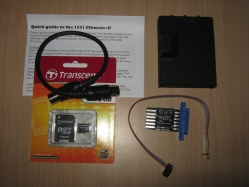
Autopsy:
The 1541 Ultimate-II is a peripheral developed for the Commodore 64 (C64) by Gideon Zweijtzer.
It’s a C64 compatible cartridge that carries an Action Replay, The Final Cartridge III, Super Snapshot, Retro Replay or TurboAss with Codenet support (whatever the user prefers) and a fully compatible FPGA-emulated Commodore 1541 floppy drive that is fed from a built-in Mini SD card slot with C64-compatible files (e.g. .D64 diskimages or .PRG single program files).
The difference between 1541 Ultimate-II and other SD-based & .D64 mounting cartridges (like the MMC64, Super Snapshot 2007, or MMC Replay, SD2IEC) is that the 6502 microprocessor that powers the 1541 floppy and the 1541′s mechanical behavior (even sound) is fully emulated, making it theoretically compatible with almost anything.
File selection and management is done via a third button on the cartridge that brings up a new menu on screen.
For the full features list click here.
source: 1541ultimate.net ar.c64.org
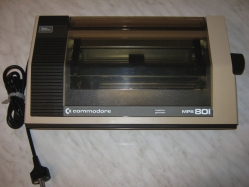
Autopsy:
Note: This is my first printer.
from c64-wiki.com:
The Commodore MPS 801 was a Matrix-Printer (Stylus-Printer) from Commodore released in the year 1984. MPS stands for Matrix Printer System, an invention from Commodore.
The Commodore MPS-801 was one of the first Printers offered by Commodore for its home computers. The printer used fan-fold paper via a paper tractor. The print resolution was a 6×7 Matrix at 10 chars/inch. The printing speed was about 50 chars per second.
Because of its 7-pin print head, character descenders couldn’t be created with the MPS 801. This was later made possible through some software tricks. The printer only supports unidirectional printing (i.e. it is only printing when the print head moves from left to right). On the way back to the left, the print head was inactive, which made the printer very slow, compared to later models. The interface to the computer was a serial IEEE-488, the serial bus for the C64.
The printer was not developed and produced by Commodore. The MPS-801 was produced by the Japanese company Seikosha, a subsidiary of the clock manufacturer Seiko (the same model there was named Seikosha GP 500 VC). At that time, Seikosha was one of the largest printer manufacturers in the world and was also manufacturing printers for Atari, such as the Atari 1029 printer.
Apart from the complete ASCII-charset the 801 could also print all Commodore graphic characters and reverse characters were possible. In addition to text and special glyphs the printer was capable of printing graphics.
For manual paper-handling there was a mechanical handwheel on the right side of the printer. Additionally a membrane key was provided for incremental linefeed.
source: c64-wiki.com
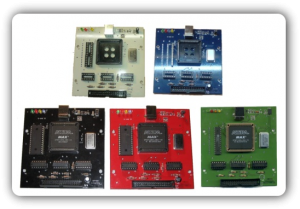 The HxC Floppy Drive Emulator is a software and hardware system created by jfdn aka Jeff.
The HxC Floppy Drive Emulator is a software and hardware system created by jfdn aka Jeff.
The aim of this project is to replace the floppy disk drive by an electronic device emulating the floppy disk drive (list of supported Computer/Hardware).
There are two differents emulators:
- A USB version which allows to connect the floppy disk drive interface of the computer to a PC via a USB cable.
- A SDCARD version which allows to emulate floppy disks which images are stored in a SDCARD.
Release notes for the HxCFloppyEmulator software v1.6.9.0:
- New files Support : Kurzweil KRZ file support.
- New files Support : EDE EDM (Ensoniq Mirage) file image support.
- A new “About” window ;).
- … full release notes here
Download: HxCFloppyEmulator software v1.6.9.0 (917)
source: hxc2001.free.fr
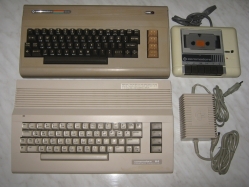
Two Commodore 64 added to my collection. The external case was bit dirty, it took me a couple of hours for a good cleaning but now the two C64 are like new.
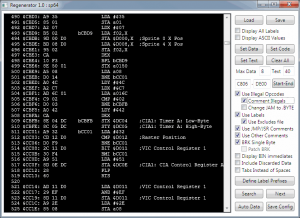 Regenerator is an interactive disassembler for C64 binaries. Regenerator will load any standard C64 .PRG file (or VICE snapshot) and disassemble it for your convenience.
Regenerator is an interactive disassembler for C64 binaries. Regenerator will load any standard C64 .PRG file (or VICE snapshot) and disassemble it for your convenience.
There are a few options you can choose to change the output and a few tools to make the output look better and more useful to programmers. Regenerator runs under M$ windows and need .net 3.5 (or 4.0) runtime.
Download: Regenerator v1.0 by n0stalgia (1332)
source: noname.c64.org
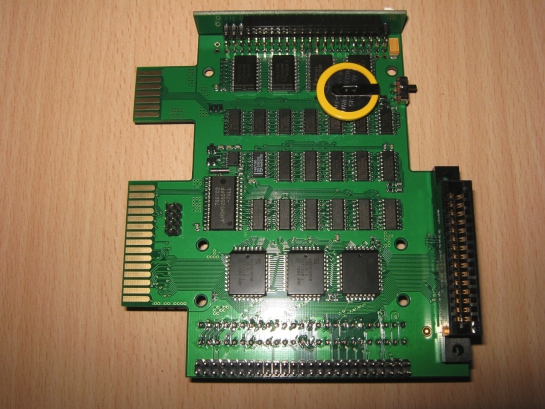
Autopsy:
IDE Plus 2.0 is a new IDE host adapter by Simius for Atari (XE/XL) computer.
Some features:
- Is not much greater than a 2,5-inch IDE disk.
- Does not require an external power-supply.
- Contains an XE (CART+ECI) connector, an XL (PBI) connector, a cartridge port, and a connector for a 2,5-inch IDE disk.
- Contains 96 KB ISP Flash ROM and 32 KB RAM available to the internal PBI BIOS and flashable from the Atari.
- Contains 512 KB or 1024 KB ISP Flash ROM for SpartaDOS X (or any other cartridge of such type), flashable from the Atari. This ROM can be physically disabled using a dedicated switch. The switch is not installed in the device shown on photos below.
- Contains a real time clock circuitry to be used with SpartaDOS X. If someone doesn’t want to use it, the module is anyway fully compatible with an external R-Time 8 or internally mounted ARC.
- A LED flashing during the I/O.
source: atariage.com
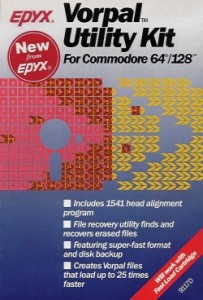 The Vorpal save and load utilities are for placing user-created files and programs in a special fast-loading format.
The Vorpal save and load utilities are for placing user-created files and programs in a special fast-loading format.
Unlike the Fast Load Cartridge from Epyx, the Vorpal fast loading feature will not speed the loading of “off-the-shelf” programs and games purchased from software manufacturers.
Includes powerful utilities for Commodore 64/128.
- 1541 Head Alignment: Head Alignment Utility puts most 1541 disk drives back on track.
- File Recovery Utility: Finds and recovers files that were erased by mistake.
- Super-Fast Disk Format: Epyx’s own format utility formats disks in approximately 25 seconds. Normal formatting time is almost 2 minutes.
- Super-Fast File Backup: Fast file backup utility recognizes many different file formats including relative and Vorpal files.
- Super-Fast Disk Backups: High speed disk backup can duplicate a disk in a fraction of the time it normally takes.
- Disk Drive Speed Check: Diagnostic utility monitors the performance of Commodore 1541 and 1571 disk drives.
- Vorpal* Save/Load: Special Vorpal save and load utilities place user-created files and programs in Vorpal format. Files and programs load up to 25 times faster than normal.
Download: Vorpal Utility Kit (1230)
source: elisoftware.org noname.c64.org
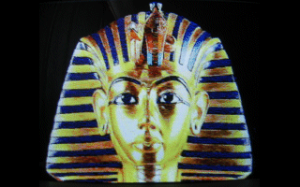 This is a new graphics-mode for the Commodore 128 with 64KB VDC RAM.
This is a new graphics-mode for the Commodore 128 with 64KB VDC RAM.
There are two Video modes, one is called: VDC-IHFLI (640×480 pixels) and the other one is: VDC-FLI (480×252 pixels).
The archive contain the software (converter) for M$ Windows and some demos.
Download: VDC-IHFLI Converter & Demo (914)
Download: VDC-FLI Converter & Demo (821)
source: noname.c64.org
 Onslaught / Wrath Designs / Vandalism, bring to you the 56th issue of the Vandalism News.
Onslaught / Wrath Designs / Vandalism, bring to you the 56th issue of the Vandalism News.
Download: Vandalism News #56 (890)
source: noname.c64.org
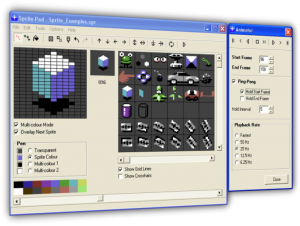 Subchrist has updated his Sprite Editor for Commodore 64. Sprite Pad is a free cross-platform development tool for designing sprite images and animations.
Subchrist has updated his Sprite Editor for Commodore 64. Sprite Pad is a free cross-platform development tool for designing sprite images and animations.
Improvements and changes in this version:
- Added single file projects (spd format)
- Added VICE snapshot ripper.
- Expanded browser window from 6×6 (36) to 8×7 (56) sprites.
- Added quantity control.
- Removed horizontal scroll from the browser as it was fiddly to navigate.
- Set default palette order back to standard to improve colour identification.
- Added Import/Export options with support for SEUCK/PRG files.
General Program Features:
- Edit and animate multicolour and high-resolution sprite images.
- Rotations. A World first?, Free rotate with variable angle limiter, auto-generate rotation sequences in any mode with 1 degree accuracy.
- Overlays. Allows the designing of 2 sprites as one + animation and rotation support!.
- Multiple Palettes. User editable palette file supports up to 20 additional palettes. (Default palette is now technically accurate).
System Requirements:
- The program has been designed, programmed and tested on a 32-bit Windows XP (SP3) system.
- The development machine has an Athlon XP 2400+ (2Ghz) with 512MB of RAM and an old 64MB Nvidia Geforce4 MX GFX card.
Download: Sprite Pad v1.8 (898)
source: subchrist homepage
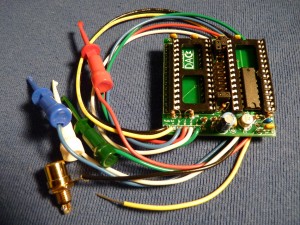 This is a compact, feature-filled dual-SID board, designed to provide a proper way to mount a second SID inside your C64 or C128 without resorting to the old piggyback hack.
This is a compact, feature-filled dual-SID board, designed to provide a proper way to mount a second SID inside your C64 or C128 without resorting to the old piggyback hack.
Variations available to fit most C64 and C128 computers. Second SID can be placed at any 32-byte boundary from $DE00 to $DFE0, and it works in the $D420-$D4E0 range also. C128/C128-D users can also use $D700-$D7E0.
Easy no-solder installation – just move your computer’s SID chip onto the Stereo SID board, plug it into the motherboard SID socket, and connect a few micro-hook clips.
source: digitalaudioconcepts.com
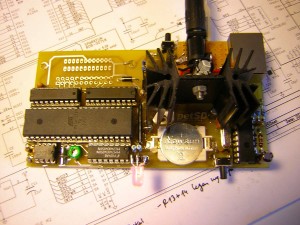 petSD is the name of the new AVR-based hardware. It’s a modern mass storage solution for Commodore PET/CBM computers with IEEE 488 bus using SD cards as floppy or hard disc replacement.
petSD is the name of the new AVR-based hardware. It’s a modern mass storage solution for Commodore PET/CBM computers with IEEE 488 bus using SD cards as floppy or hard disc replacement.
If you know the SD2IEC or µIEC: the petSD is just the same but for the older parallel IEEE 488 bus instead of the newer serial IEC bus.
The petSD is still a work in progress and there still are some issues.
A petSD consists of at least:
- ATmega 1284P.
- Red and a green LED (may be combined in one).
- SD slot.
- IEEE 488 connector.
source: nils eilers homepage





 This is a very nice conversion of the arcade game
This is a very nice conversion of the arcade game  The ZXpand interface is a brand new interface for the Sinclair ZX81, and Timex-Sinclair TS/1000 Home Computers.
The ZXpand interface is a brand new interface for the Sinclair ZX81, and Timex-Sinclair TS/1000 Home Computers.































 The HxC Floppy Drive Emulator is a software and hardware system created by jfdn aka Jeff.
The HxC Floppy Drive Emulator is a software and hardware system created by jfdn aka Jeff.
 Regenerator is an interactive disassembler for C64 binaries. Regenerator will load any standard C64 .PRG file (or VICE snapshot) and disassemble it for your convenience.
Regenerator is an interactive disassembler for C64 binaries. Regenerator will load any standard C64 .PRG file (or VICE snapshot) and disassemble it for your convenience.











 The Vorpal save and load utilities are for placing user-created files and programs in a special fast-loading format.
The Vorpal save and load utilities are for placing user-created files and programs in a special fast-loading format. This is a new graphics-mode for the Commodore 128 with 64KB VDC RAM.
This is a new graphics-mode for the Commodore 128 with 64KB VDC RAM. Onslaught / Wrath Designs / Vandalism, bring to you the 56th issue of the Vandalism News.
Onslaught / Wrath Designs / Vandalism, bring to you the 56th issue of the Vandalism News. This is a compact, feature-filled dual-SID board, designed to provide a proper way to mount a second SID inside your C64 or C128 without resorting to the old piggyback hack.
This is a compact, feature-filled dual-SID board, designed to provide a proper way to mount a second SID inside your C64 or C128 without resorting to the old piggyback hack. petSD is the name of the new AVR-based hardware. It’s a modern mass storage solution for
petSD is the name of the new AVR-based hardware. It’s a modern mass storage solution for 


Recent Comments